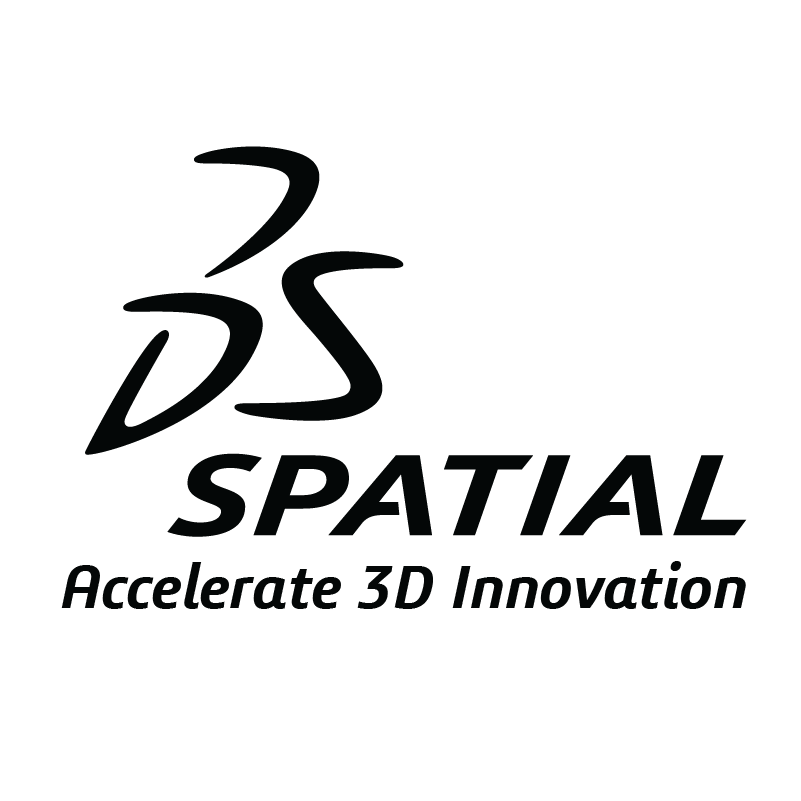HIGHER PERFORMANCE AND SPECIALIZED FUNCTIONS ADDRESS INDUSTRY NEEDS
Broomfield, CO – May 18, 2010 - Spatial Corp., a leading provider of 3D development components for design, manufacturing and engineering applications, today announces 3D ACIS® Modeler and 3D InterOp Suite Release 21 (R21). The latest release delivers powerful new capabilities for engineering and manufacturing applications, improves application developer productivity with a streamlined interface, and adds support for large scale Point Clouds, enabling metrology and reverse engineering applications to efficiently store and perform operations on vast amounts of point data. R21 significantly improves the performance of 3D InterOp, the market leader in translation components for high-quality, precise geometry in data reuse applications.
In ACIS R21, the new faceter interface for generating a surface mesh includes pre-defined settings for 3D visualization or analysis plus an expert mode resulting in faster implementation time. Mesh generation performance has been improved with a new quad tree gridding algorithm which reduces the memory footprint and required number of facets to accurately tessellate a model. And for the metrology industry, R21 ensures completion of inspection and measurement paths by providing fail safe slicing of an ACIS model. The release also includes performance enhancing options for calculating the distance between an entity and a point when assessing the dimensional accuracy of manufactured parts.
“Spatial continues to deliver the innovation Carl Zeiss requires to stay ahead of our competition. Many of the R21 capabilities are a direct result of working closely with their development team to discuss the evolving needs of the metrology industry such as increasing performance requirements as data levels increase,” commented Dr. Kai-Udo Modrich, Carl Zeiss Director Software Development. “It is clear that Spatial understands the needs of machine manufacturers with specialized applications, in addition to their more traditional markets.”
ACIS R21 New Functionality and Enhancements
Since the previously released version, ACIS R21 includes the following new capabilities:
- The ACIS Faceter, used for visualizing 3D models or analysis applications generating a surface mesh to seed volumetric meshing, utilizes an all-new quad tree gridding algorithm for improved memory usage and performance. ACIS R21 also introduces an easy-to-use Faceter interface thereby reducing the implementation effort and time.
- R21 supports efficient handling of large amounts of point data. Point Cloud operations include property queuing; Boolean operations such as unite, subtract and intersect; copying and subsetting; undo-redo; and adding and removing points. The interface is user extensible for applications to add custom data to the Point Cloud.
- For manufacturing applications, R21 handles more complex geometrical conditions when thickening surfaces, ensuring accurate, precise and fully-bounded solids.
- Metrology applications benefit from fail safe slice operations offered in R21. Fail safe slicing enables partial results when slicing an ACIS model imported from low-quality data. The result is complete inspection / measurement paths regardless of geometrical complexity or noise.
- The Entity-Point-Distance function, which metrology applications use to measure the distance between design models and manufactured parts, has a new option to detect internal, boundary and external points. This significantly improves calculation times when comparing large amounts of data.
For a complete list of functionality see the R21 ACIS Release Notes
3D InterOp R21 Enhancements
The 3D InterOp Suite has improved performance, increased translation capabilities, and added support for the latest CAD versions.
- New CATIA V5 Translation Capabilities
- Reports missing components in XML EBOM product structure for assemblies
- Supports Capture Sets
- Supports Hidden PMI in parts
- Translation Performance Improvements
- String processing for IGES, STEP and VDA reader / writers
- Attribute processing for CATIA V5 reader
- Model generation for all readers with ACIS writer
- New CAD Version Support
- CATIA V5 R20 read and write
- SolidWorks 2010 read
- ProE Wildfire 5, Siemens NX7, Inventor 2010 read
- Parasolid v22 read and write
For a complete list of functionality see the R21 3D InterOp Release Notes
“Spatial’s customers develop a diverse set of engineering and manufacturing applications. R21 builds on the robustness and versatility of ACIS and InterOp with added capabilities and performance improvements to address specialized application needs,” stated Ray Bagley, Spatial Director of Product Planning and Management. “Spatial works closely with our customers to identify new technology that supports their goals of being leaders in their respective industries and to reduce implementation times so that they can shorten their time-to-market with new applications.”
Evaluation Program
3D ACIS® Modeler and 3D InterOp Suite R21 is available for a 45-day evaluation. Evaluation Request forms are available on Spatial’s website.
About Spatial
Spatial Corp., a Dassault Systèmes S.A. subsidiary, is a leading provider of 3D development software components for technical applications across a broad range of industries. Spatial’s 3D modeling software, HOOPS 3D visualization software, and CAD translation software components help application developers deliver market-leading products, maintain focus on core competencies, and reduce time-to-market. Spatial 3D components have been adopted by some of the world's most recognized software developers, manufacturers, research institutes, and universities. Headquartered in Broomfield, Colorado, Spatial has offices in the USA, Germany, Japan, China and the United Kingdom. For more information, please visit
Spatial Media Contact:
Howie Markson
(303) 544-2966

